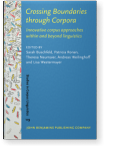Chapter 3
A corpus-based comparative acoustic analysis of target-like vowel production by L1-Japanese learners and native speakers of English
This study combines acoustic phonetics, (applied) corpus linguistics, machine learning, and speech recognition to analyse the production of the monophthongal vowels / ɐ ɒ æ e ɛ i: ɪ u; ʊ ʌ / in the speech of L1-Japanese learners and L1-speakers of English based on transcripts and audio data from the Japanese spoken monologue section of the International Corpus Network of Asian Learners of English (ICNALE). The aim of this analysis is to evaluate what vowels L1-Japanese learners struggle with in terms of target-like vowel production and to provide insights into the determining factors causing divergencies from L1-English produced vowels. The results of a Multifactorial Prediction and Deviation Analysis Using Regression/Random Forests (MuPDARF) show that Japanese learners of English do indeed have difficulties in producing English vowels in a target-like manner but that these difficulties are confined to a relatively small set of vowels (/ ɪ u ʊ ɛ /). In addition, the analysis shows that difficulties are predominantly correlated with language-internal factors while language external factors (the age and gender of speakers) as well as their target variety and proficiency do not significantly correlate with non-target-like vowel production. The results suggest that Japanese learners of English can focus on specific vowels to enhance their target-like vowel production and that difficulties are caused by L1-interference due to a lack of phonemic vowel duration in Japanese and the similarity of Japanese and English vowels leading learners to use their L1 vowels rather than the slightly but notably different English vowel variants. The results can be used to raise awareness of L1-specific difficulties among this learner cohort due to their L1-background.
Article outline
- 1.Introduction
- 2.Previous research
- 3.Corpus data
- 4.Statistical analysis
- 5.Results
- 5.1Initial Random Forest Model
- 5.2Second Random Forest model
- 5.3Correlates of non-target like production
- 6.Discussion
- 7.Conclusion
-
Notes
-
References
This content is being prepared for publication; it may be subject to changes.
